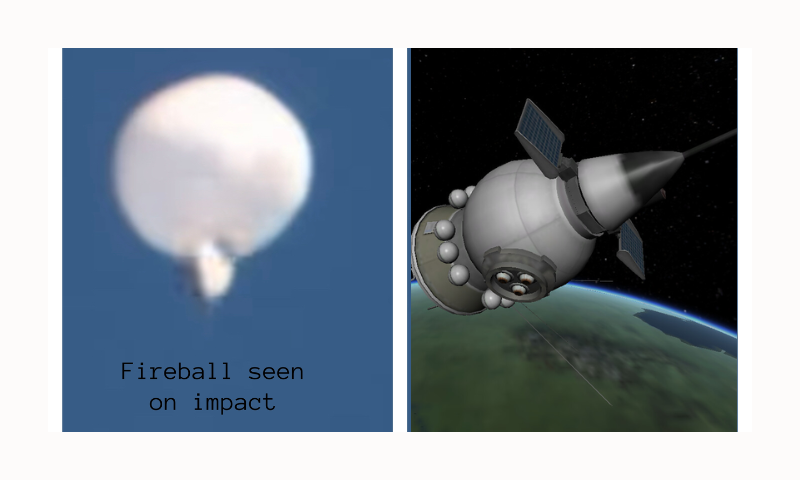C. Zachary Hofer and Carter Palmer
Defense & Security Monitor, Feb. 6, 2023
“The major benefit of a stratospheric surveillance balloon is as a signals intelligence platform.”
From the end of January and into February, an uncommon object captured the attention of observers around the globe, but probably none more so than the Canadian and U.S. citizens over which it flew. The object in question? A Chinese surveillance balloon, floating in the stratosphere – first across the Aleutian Islands of Alaska, onward into Canada, and crossing again into the U.S. via Idaho. The balloon ultimately met an untimely demise, suffering a violent end – death by ballistics launched from a U.S. Air Force F-22. Location: the U.S. exclusive economic zone (EEZ), off the coast of South Carolina.\
Whether you believe the Chinese government’s assertions that the high-altitude balloon was meant for weather observation and went unexpectedly wayward or the U.S. government’s contention that the balloon was deliberately sent with more nefarious intentions – to surveil U.S. military sites – both parties agree that the balloon was meant for surveillance. Whether to observe weather or sensitive military secrets, both fit the bill for surveillance.
Using balloons to gather information is nothing new. Weather balloons, for example, have been used for over a century for observation of our planet’s environment, but not all balloon use has been so peaceful. Over their long history, balloons have also been used for war purposes. Low-altitude, hot air balloons were used for surveillance during World War I. And in World War II, the Japanese government used “Fu-Go” balloon bombs, launching over 9,000 examples. In the U.S., the Fu-Go balloons caused only minor damage but killed at least six U.S. civilians in Oregon. … [To read the full article, click here]


